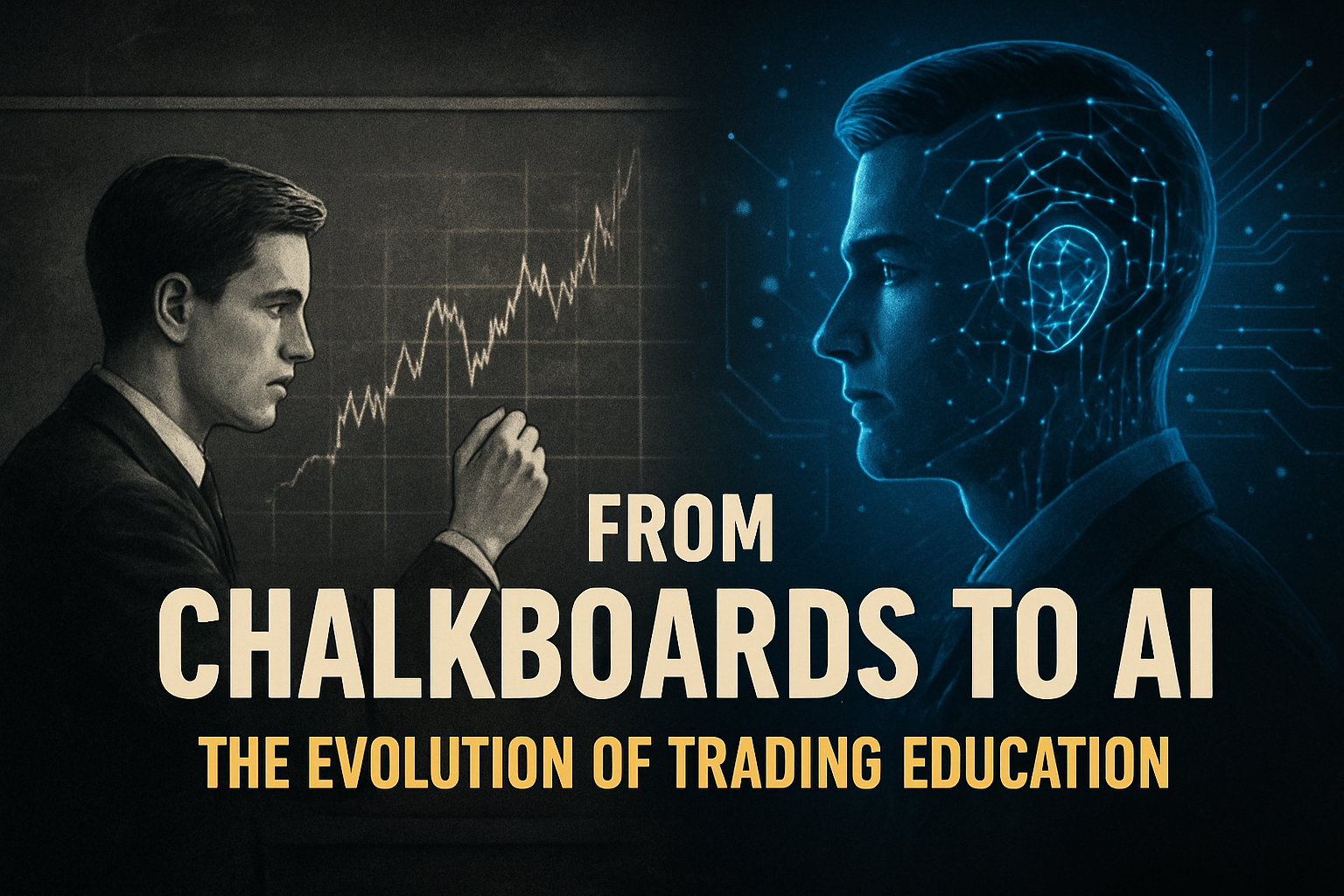Not too long ago, becoming a trader meant sitting in a classroom, traveling miles for lessons, and flipping through the daily newspaper to track market movements. Today, things couldn’t look more different. Technology has rewritten the rules, but one truth remains: education is still the foundation of trading success.
The Internet & CFDs: Opening the Floodgates
The early 1990s sparked two revolutions. First, the internet gave traders instant access to markets and information – no more relying only on print or paper certificates. Then came Contracts for Difference (CFDs), which let traders speculate on currencies, commodities, indices, stocks, and even crypto – without owning the underlying asset. Suddenly, anyone with a computer could step into the global markets.
From Classrooms to Living Rooms
Before the internet, aspiring traders had no choice but to sit in physical classrooms. Now, with online platforms, training is accessible 24/7, anywhere in the world. But accessibility hasn’t solved everything – quality education is still the challenge.
Markets have become more complex, and while platforms offer endless tools and instruments, many beginners are left asking the same questions: Where do I start? How do I choose a broker? How much should I invest? The answers aren’t always simple – but the rise of prop firms changed the game.
Prop Firms: Education Meets Opportunity
Prop firms have reshaped trading education. Unlike demo accounts, which often feel like “play money,” prop firm challenges mirror real-world conditions. They force traders to master risk management, discipline, and consistency – skills that textbooks rarely teach.
Instead of theory-heavy lessons, prop firms make traders prove they can follow rules, manage pressure, and stick to a process. For those who succeed, the reward is bigger than just knowledge – it’s access to real trading capital. In short, prop firms transformed trading education from “learning for the sake of it” into a direct pathway to career growth.
AI: The Always-On Mentor
Now, another force is reshaping the trader’s journey: Artificial Intelligence. AI acts like a personal coach – analyzing trades in real time, flagging risk-taking, and even suggesting adjustments before mistakes spiral. It personalizes learning, giving traders feedback tailored to their habits and decisions.
Where old-school education offered generic theories, AI delivers live insights: scanning thousands of assets, breaking down news instantly, and helping traders spot patterns they’d otherwise miss. It closes the gap between theory and execution, making learning part of every trade.
The Future: A Fusion of Funding and Technology
Prop firms gave traders access to capital. AI gives them access to real-time mentorship. Together, they’ve turned trading education into a results-driven journey. Success is no longer about memorizing strategies – it’s about applying skills under pressure, with technology guiding the way.
Trading education has evolved from classrooms to couches, from demo accounts to funded accounts, from guesswork to data-driven coaching. The modern trader doesn’t just study markets – they grow with them. And in this new era, the real advantage belongs to those who embrace both discipline and innovation.
Conclusion
Trading education has entered a new era. The days of memorizing theory in dusty classrooms are gone. Today, prop firms demand proof of skill under real market pressure, and AI delivers instant feedback that accelerates growth. Together, they’ve redefined what it means to learn: it’s no longer about information, it’s about transformation.
The traders who thrive now aren’t just students – they’re disciplined operators, backed by capital and guided by technology. The opportunity has never been greater. The only question is: will you step up, embrace the tools, and claim your place in the markets?


